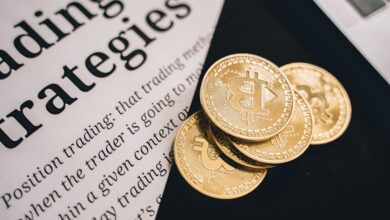Sustainable Gold Mining: Eco-Friendly Practices and the Future of Ethical Gold Investment

In recent years, the conversation surrounding sustainable gold mining has gained significant momentum, as consumers and investors alike become increasingly aware of the environmental and ethical implications of gold production. As a safe haven asset, gold remains a sought-after investment, but the traditional methods of gold mining often come at a high cost to the environment and local communities. This article delves into the eco-friendly and ethical practices shaping the gold mining industry today, providing insights into sustainable gold mining practices that balance gold production with environmental responsibility.
We'll explore how gold market trends influence ethical gold investment strategies, shedding light on the importance of aligning financial goals with sustainability. Furthermore, we will discuss the latest innovations in gold technology that enhance gold recycling efforts and mitigate risks associated with gold smuggling, ultimately contributing to a more responsible gold trade. Join us as we navigate the complexities of gold mining, investment opportunities, and the evolving landscape of global gold demand, ensuring that your gold investments not only yield financial returns but also support a sustainable future.
- 1. Sustainable Gold Mining Practices: Balancing Gold Production and Environmental Responsibility
- 2. The Impact of Gold Market Trends on Ethical Gold Investment Strategies
- 3. Innovations in Gold Technology: Enhancing Gold Recycling and Reducing Gold Smuggling Risks
1. Sustainable Gold Mining Practices: Balancing Gold Production and Environmental Responsibility
Sustainable gold mining practices are becoming increasingly vital as the world seeks to balance gold production with environmental responsibility. With gold being a popular safe haven asset and a significant component of various investments, including gold ETFs and gold futures, the mining industry faces growing pressure to adopt eco-friendly methods. Sustainable gold mining not only addresses the environmental impact but also enhances the integrity of the gold trade, ensuring that gold jewelry, coins, and collectibles are produced ethically.
One key aspect of sustainable gold mining is the reduction of harmful chemicals traditionally used in the extraction process. For instance, replacing toxic substances like mercury and cyanide with safer alternatives can significantly minimize pollution and health risks in mining communities. Additionally, implementing advanced gold technology in extraction and refining processes can increase efficiency and reduce waste, ultimately lowering the environmental footprint of gold production.
Recycling plays a crucial role in the sustainable gold market. Gold recycling allows for the reclamation of precious metals from old jewelry, electronic devices, and industrial applications. This not only helps to preserve existing gold reserves but also reduces the demand for new mining activities, which can lead to habitat destruction and increased carbon emissions. As global gold demand rises, particularly amid economic uncertainty and inflation concerns, promoting gold recycling can serve as an effective strategy for maintaining a sustainable supply chain.
Moreover, responsible mining companies are now investing in community development and environmental restoration initiatives. By collaborating with local communities and stakeholders, these companies can ensure that the benefits of gold mining—such as job creation and infrastructure development—are shared equitably. This approach not only enhances the reputation of the gold industry but also contributes to long-term sustainability and stability in the gold market.
In light of the ongoing challenges posed by gold smuggling and unethical mining practices, consumers are increasingly looking for assurance that their purchases, whether gold bullion, bars, or luxury gold items, come from responsible sources. As central banks continue to hold significant gold reserves, they too play a role in shaping market trends toward more sustainable practices. The integration of ethical sourcing into the gold standard can drive a shift toward a more responsible gold market, ultimately benefiting both investors and the environment.
By embracing these sustainable gold mining practices, the industry can ensure that gold remains a valuable investment that aligns with global values of environmental stewardship and ethical responsibility.
2. The Impact of Gold Market Trends on Ethical Gold Investment Strategies
The relationship between gold market trends and ethical gold investment strategies is a critical consideration for investors today. As global gold demand fluctuates due to economic conditions, geopolitical tensions, and changing consumer preferences, it has a direct impact on the sustainability and ethics surrounding gold production. Investors increasingly recognize the importance of aligning their gold investment choices with environmentally-friendly and socially responsible practices.
One significant trend shaping the gold market is the rising awareness of sustainable gold mining practices. As consumers and investors demand transparency, ethical sourcing, and eco-friendly production methods, companies that engage in sustainable mining are becoming more attractive. Ethical gold investment strategies may include investing in gold ETFs that prioritize companies adhering to responsible mining practices or directly supporting brands that ensure ethical sourcing of gold for luxury products, such as gold jewelry and collectibles.
Another factor influencing the gold market is the volatility of gold prices, often seen as a safe haven asset during times of economic uncertainty. As inflation rises and currencies fluctuate, investors often turn to physical gold, gold bullion, or gold bars as a hedge. This shift towards tangible assets has led to an increase in gold recycling initiatives, promoting the reuse of gold from old jewelry and electronics, thus reducing the need for new mining operations.
Moreover, the impact of central banks on gold reserves and the gold standard cannot be overlooked. As central banks continue to accumulate gold as part of their reserves, they influence gold market analysis and pricing structures. This accumulation can drive up gold prices, subsequently affecting the strategies investors employ when considering gold futures and other investment vehicles.
The ongoing battle against gold smuggling and unethical trades also plays a pivotal role in shaping the conversation around ethical investments. Investors are becoming more vigilant about the origins of their gold coins and collectibles, often opting for reputable dealers and certification processes that ensure the gold has been sourced responsibly.
In conclusion, the dynamics of gold market trends profoundly influence ethical gold investment strategies. As awareness grows around sustainable practices in gold mining, the demand for ethically-sourced gold continues to rise, compelling investors to reassess their portfolios in favor of responsible options. By considering these trends, investors can align their financial goals with their values, supporting a more sustainable future for gold production.
3. Innovations in Gold Technology: Enhancing Gold Recycling and Reducing Gold Smuggling Risks
Innovations in gold technology are transforming the landscape of sustainable gold mining and addressing pressing issues such as gold recycling and gold smuggling risks. With gold being a safe haven asset and a critical component in investment portfolios, the need for responsible and ethical practices has never been more significant.
One of the most promising advancements is in gold recycling techniques. Enhanced methods of reclaiming gold from electronic waste and jewelry are minimizing the environmental impact associated with traditional gold mining. By improving gold refining processes, companies can extract gold more efficiently, reducing the need for new gold production and conserving existing gold reserves. This shift not only helps in maintaining gold prices by stabilizing supply but also aligns with the growing trend towards sustainability in the gold market.
Additionally, the integration of blockchain technology is addressing the issue of gold smuggling. By creating a transparent and traceable gold trade system, blockchain can help validate the origin of gold bullion and gold coins, ensuring that they are ethically sourced. This innovation is crucial in combating the illicit gold trade that often undermines sustainable gold mining efforts. With central banks increasingly turning to gold as a hedge against inflation and economic uncertainty, maintaining the integrity of the gold market is essential for investors looking at gold ETFs and gold futures as part of their investment strategy.
Furthermore, advancements in artificial intelligence and machine learning are providing valuable insights into gold market analysis. These technologies allow for better forecasting of gold market trends, helping investors make informed decisions on physical gold and luxury gold investments. By understanding global gold demand and price fluctuations, market participants can navigate the complexities of gold collectibles and gold jewelry markets more effectively.
As the gold industry continues to innovate, the focus on sustainable practices, enhanced recycling methods, and the prevention of gold smuggling will play a crucial role in shaping the future of gold production. This not only benefits the environment but also reinforces the value of gold as a long-term investment strategy, ensuring that gold remains a preferred option for investors amid the evolving landscape of gold and cryptocurrency.
In conclusion, sustainable gold mining represents a crucial step towards balancing the demands of gold production with the need for environmental stewardship and ethical practices. As we have explored, adopting sustainable mining practices not only helps mitigate the negative impacts on ecosystems but also aligns with the growing consumer demand for responsible gold investment options. The evolving gold market trends, influenced by factors such as inflation and the performance of gold as a safe haven asset, highlight the importance of ethical considerations in gold investment strategies, including gold ETFs and physical gold purchases.
Innovations in gold technology are paving the way for enhanced gold recycling, offering environmentally friendly alternatives to traditional mining methods while simultaneously addressing issues like gold smuggling. As global gold demand continues to rise, central banks and investors alike are increasingly recognizing the value of ethical gold production in maintaining the integrity of gold reserves and the gold trade.
By prioritizing sustainable gold mining practices, we not only contribute to a healthier planet but also support a more ethical gold market that values both the environment and the communities involved in gold production. As we look to the future, let us embrace these sustainable strategies in our investment decisions, ensuring that our pursuit of gold, whether in the form of gold bars, gold coins, or luxury gold jewelry, supports a more responsible and sustainable industry for generations to come.
References:
(Include relevant sources here)





